Hausu: Love Never Dies
October 26, 2021 By Go BackEven those who saw Dario Argento’s fantastical horror film Suspiria in 1977 were probably not prepared for Nobuhiko Obayashi’s House (also known affectionately by its Japanese pronunciation Hausu), which premiered in Japan in July of that same year. How does one begin to comprehend or explain a film which looks like a live-action cartoon and includes a scene in which a watermelon transforms into a decapitated head and flies through the air to bite someone on the rear end? The plot of the film is fairly simple, but with Hausu. And what execution it is!
Gorgeous, so named for her pleasing appearance, is a teenage girl who decides to visit her aunt over the summer break, instead of spending the time with her widower father and his new girlfriend, Ryoko. Her six schoolmates Fantasy, Kung Fu, Mac, Melody, Prof, and Sweet (each named for their defining personality trait) decide to accompany her when their plans fall through. Things quickly go sideways when the girls start to disappear one by one, only to be killed in increasingly bizarre ways, such as being eaten by a grand piano. Oh, and did I mention there’s also a white cat named Blanche who may or may not be a witch’s familiar?
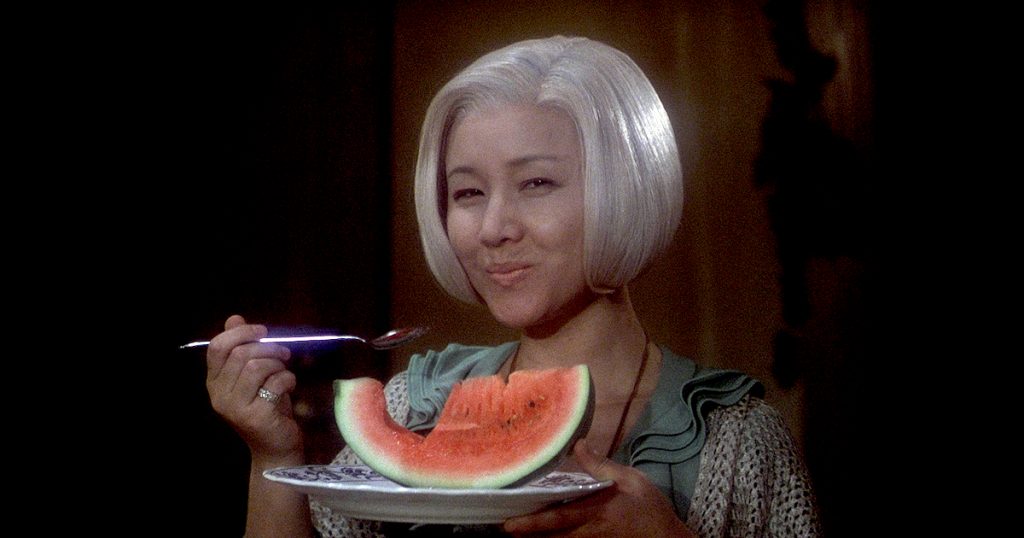
The history of supernatural entities in Japanese culture extends far beyond the dawn of cinema. The term “Kaidan” literally means “supernatural tale.” These stories became widely popular during Japan’s Edo Era (1603–1868 CE) as part of a popular party game in which “participants would try to tell 100 ghost stories in the hope of causing a ghostly apparition to appear.”
As the demand for ghost stories grew, authors went searching for scary stories across the country, even in the most remote areas. This meant that the ever-growing library of Kaidan would eventually not only include details specific to certain regions but also that they would contain historical references to events. Many of these events “were also depicted in early Noh and Bunraku plays,” so they were familiar to audiences. Scholars believe that some of these stories may be older than the Edo Era, possibly referencing superstitions and legends that existed before the written word.
While modern audiences will be most familiar with J-Horror films such as Ringu or Ju-On, these films represent a more specific subset of the Kaidan genre which deals with ghosts, also known as yūrei. Japanese culture defines several subgenres of yūrei, but to understand the roots of contemporary J-Horror, one must focus on the onryō, or “vengeful spirit.” This type of ghost can cause harm in the world of the living by “injuring or killing enemies” or even “causing natural disasters.” The reason? Onryō want to exact vengeance against the wrongs they endured during life.
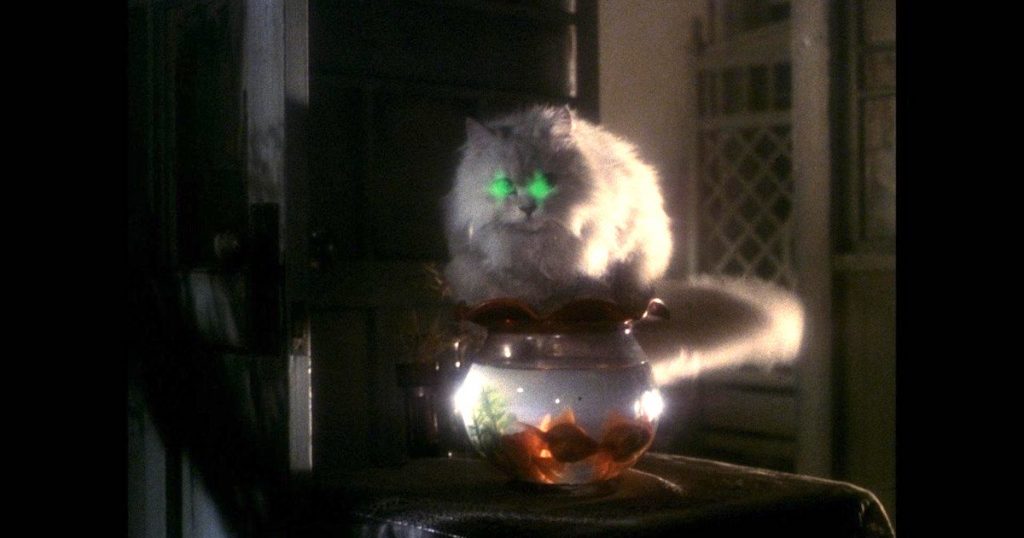
One of the earliest cinematic depictions of onryō is also based on one of the best-known Kaidan, Botan Dōrō or “The Peony Lantern,” tale of unintentional necrophilia (yes really!). This story has been adapted for the screen several times, as far back as 1910. Another well-known and popular Kaidan adapted multiple times for the screen is “Ghost Story of Yotsuya” or “Yotsuya Kaidan.” Nobuo Nakagawa’s 1959 unforgettable film adaptation Tōkaidō Yotsuya Kaidan and its depiction of “betrayal, murder, and ghostly revenge” is not for the faint-hearted. In 1964, Masaki Kobayashi directed the anthology film Kwaidan, whose name comes from scholar Lafcadio Hearn’s 1901 collection of Kaidan and his westernization of the word. There are four stories in Kwaidan, notably “The Black Hair,” which, like “The Peony Lantern” and “Yotsuya Kaidan,” depict the horrifying repercussions of adultery and murder. Kenji Mizoguchi’s 1953 film Ugetsu is likely the best-known Kaidan film and is “based on stories in Ueda Akinari’s 1776 book of the same name.” It also portrays the negative effects of adultery, abandonment, lust, and greed, namely the torment from vengeful spirits.
So what do Kaidan have in common with Hausu? Tonally, not much. Although the aforementioned Kaidan films are masterpieces full of visual ingenuity, they are far more bleak and terrifying than the candy-coloured fever dream that is Hausu. However, it’s the character of Auntie who is the thread connecting Hausu to its Kaidan predecessors.
“The war ended but my aunt’s fiancé never returned,” Gorgeous tells her friends en route to Auntie’s country home. This trip, taken by train, is reminiscent of the one in Bram Stoker’s Dracula when the Count invites Jonathan Harker to visit him in Transylvania. Like Dracula himself, Auntie is not only feeble and grey-haired when the girls arrive but also confined to a wheelchair. There are other similarities between the world’s most famous vampire and Auntie: she insists on wearing sunglasses outdoors because the bright light “frightens” her, she runs her hand through a well of water so no one can tell that she may or may not have a reflection, and who “accidentally” destroys Sweet’s camera when she tries to take a photo of her. In addition, as soon as the girls start disappearing, Auntie becomes miraculously revived, even dispensing with her wheelchair entirely.
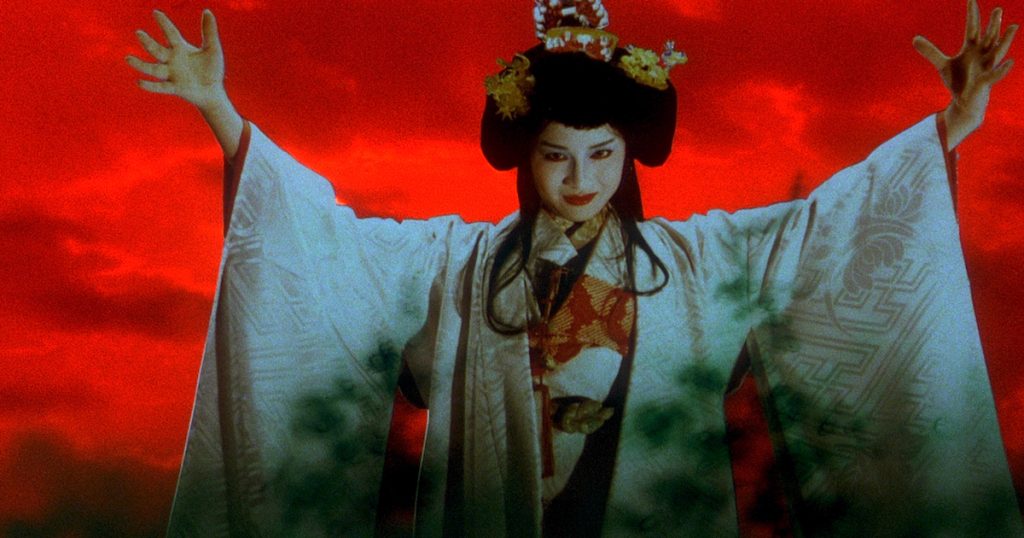
Eventually, it is revealed that Auntie died a long time ago but that her spirit remains, eating the unmarried girls who visit her home. She is an onryō who also happens to be a vampire. Although it’s at her behest, it’s the house itself that picks off the girls one by one until only Sweet remains, adrift in a sea of blood that the house emits from walls and furniture after Auntie’s painting of Blanche is destroyed. Technically, however, Gorgeous isn’t dead, she’s just transformed into the new house vampire. (Hausu has a lot going on.)
As comically strange as Hausu is, there is the distinct undercurrent of poignancy, another aspect of the film which ties it back to its Kaidan roots. At the end of the film, Ryoko arrives at Auntie’s house and asks Gorgeous if her friends are still sleeping. Gorgeous gives her an enigmatic smile and simply says, “Yes, but they’ll be hungry.” The final scene shows Gorgeous looking at the camera, her hair blowing in the breeze while bittersweet music accompanies a voiceover from Auntie: “Even after the flesh perishes, one can live in the hearts of others… the one thing that never perishes, the only promise, is love.” Love never dies, and apparently, neither do onryō.






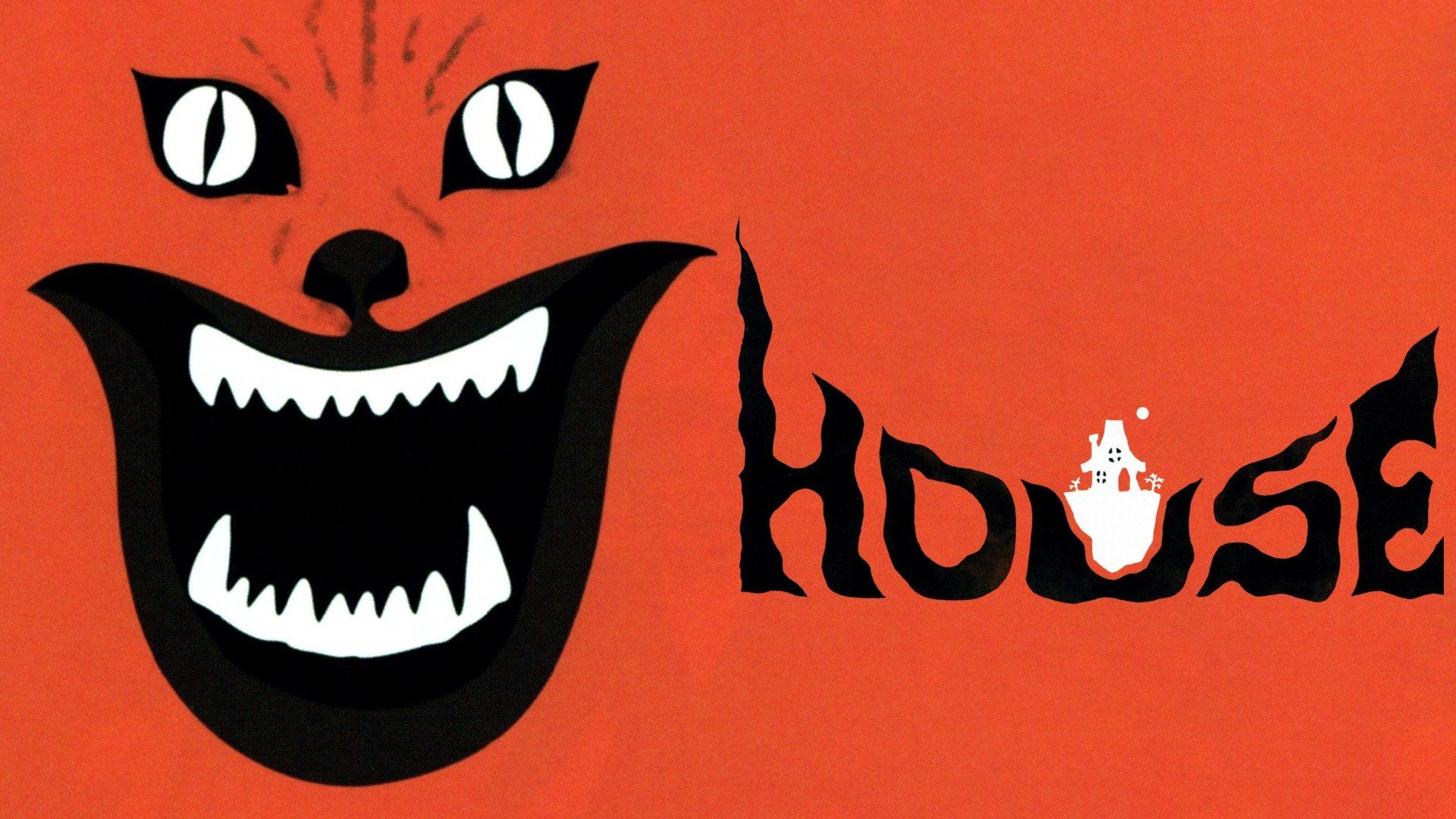
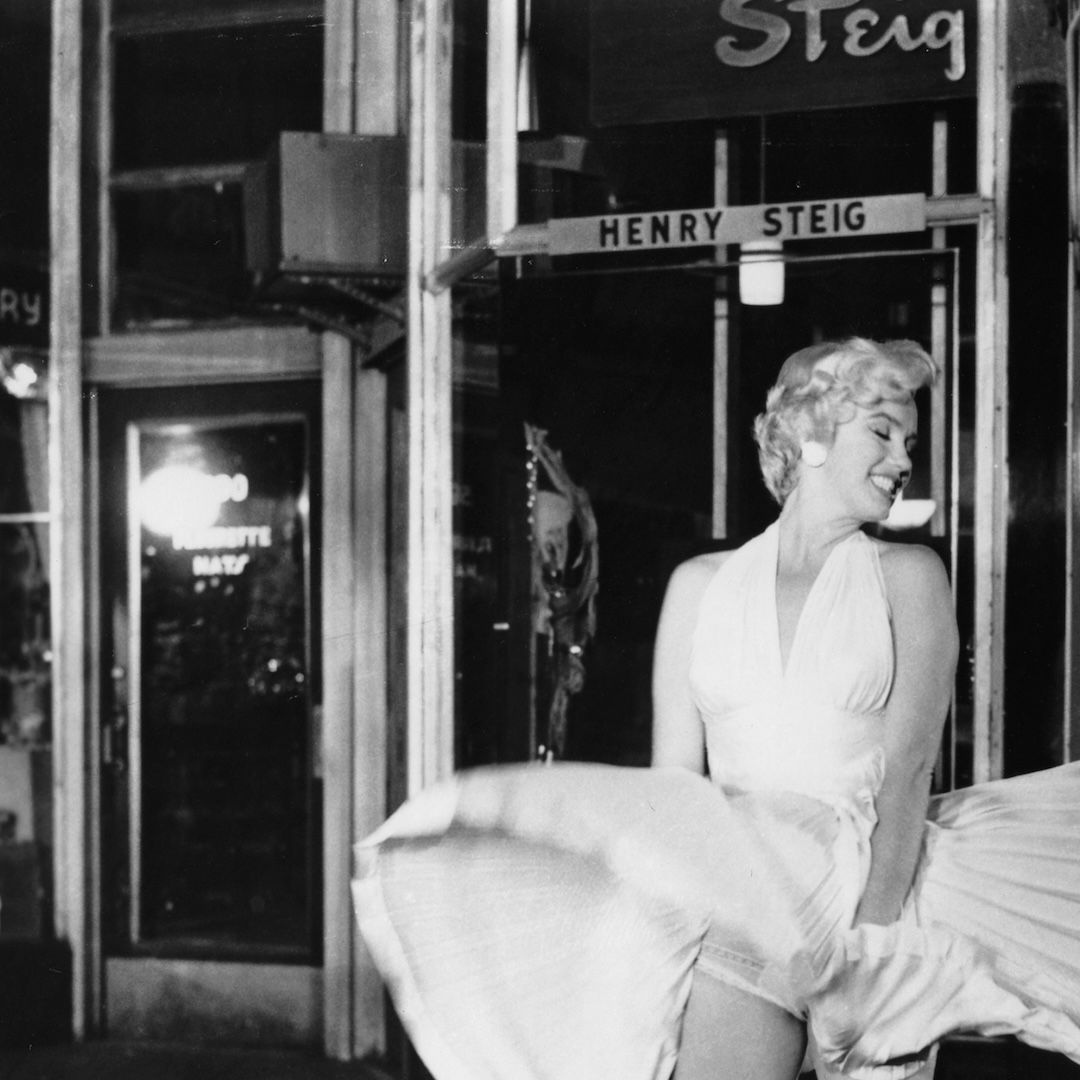

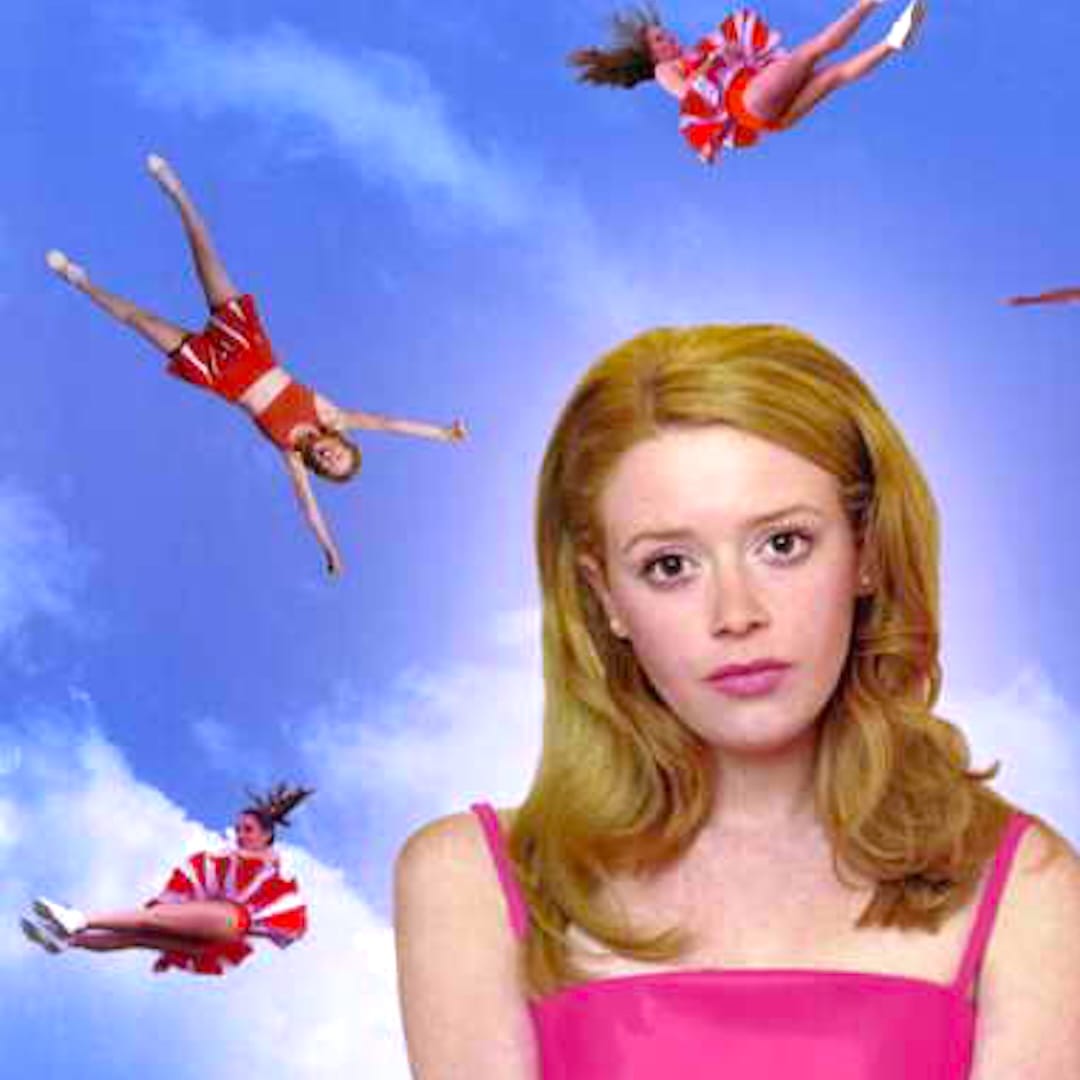



 Follow us on Instagram
Follow us on Instagram